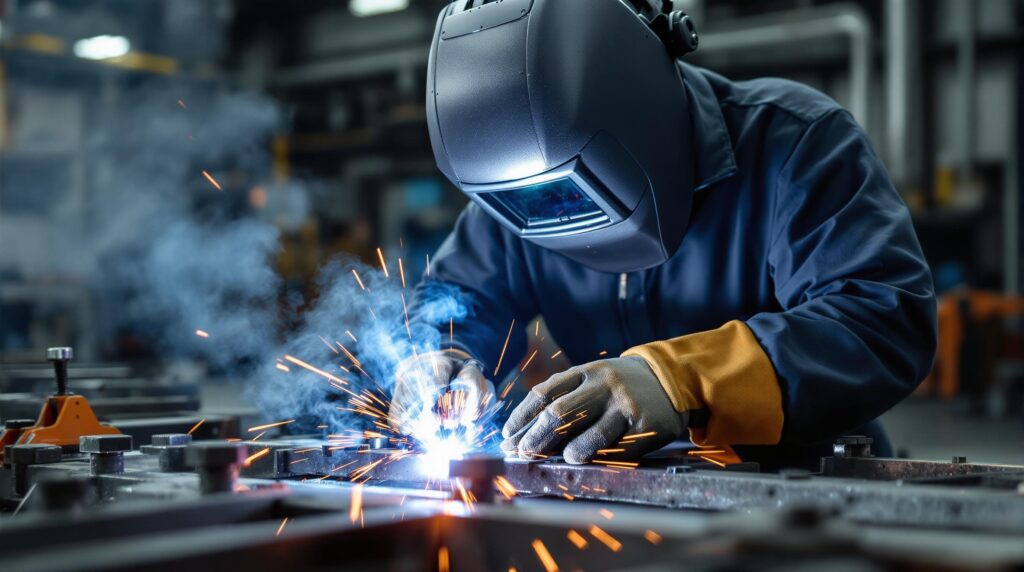Many of our clients want to know, “What is MIG welding and how is it different than other forms of welding?”
MIG welding is short for “Metal inert gas” welding. As suggested by the name, MIG welding utilizes inert gases, along with a wire electrode, to join two or more metals. During the process, the technician uses a welding gun, which controls the wire and gas, creating an arc between the two pieces of metal being joined. The arc creates heat, which melts the welding wire and heats the surface of the objects being joined. During this process, the fabricator applies inert gas to the area, which pushes out the surrounding oxygen, preventing porosity in the weld.
What is MIG Welding Used For?
MIG welding can be an extremely versatile tool for a range of industrial and commercial applications. Since it is fast, reliable, and easy to control in a shop environment, we use it for both small-scale orders and for large production runs. We serve clients from a range of industries including:
- Architectural and Design (furniture, doors, railings)
- Fences and Gates (interior and exterior)
- Structural welding
- Equipment repair
- Cages and safety partitions
- Autobody repair
- Agricultural equipment
Take a look at some of our recent projects for inspiration, or get in touch with our knowledgeable team today with any questions you might have.
What is MIG Welding Compatible With?
MIG welding can be used for a range of non-ferrous metals, like aluminum and steel. Typically, our clients request MIG welding for projects involving materials including:
- Carbon steel
- Stainless steel
- Aluminum
- Core-ten (weathering steel)
- Nickel
What is the Benefit of Choosing MIG Welding?
MIG welding is a versatile and cost-effective process. Since it can be used for a wide variety of metals, we find that it’s a popular option across multiple industries. MIG welding can be faster than other methods (like Shielded Metal Arc Welding or TIG) but can be weaker, due to the limited depth of penetration available. MIG welding is a very clean process; since the inert gases shield the alloying elements, only minor splatter and contamination occur. It can be used to join very long stretches of metal, and the process can be either automatic or semi-automatic.
What MIG Welding Gases are Used in the Process?
The choice and speed of inert gases used in MIG welding are important for controlling the quality of the weld. The inert gas is applied to the welding area, keeping out atmospheric oxygen and nitrogen from the electrode and weld area. If the weld is exposed to atmospheric gases, the final project can be weakened and contaminated. We select the inert gas based on the type of metal being used. Typically, MIG welding uses a combination of carbon dioxide, argon, helium, hydrogen, and nitrogen gases. This blend allows for a good weld while lowering the chances of oxide formation and splatter. Other factors that influence this choice are the size and shape of the weld, the texture of the welding surface, and the speed and current of the welding gun.
Have questions about an upcoming welding project? Contact our team today for information about our services, quotes, and more.

